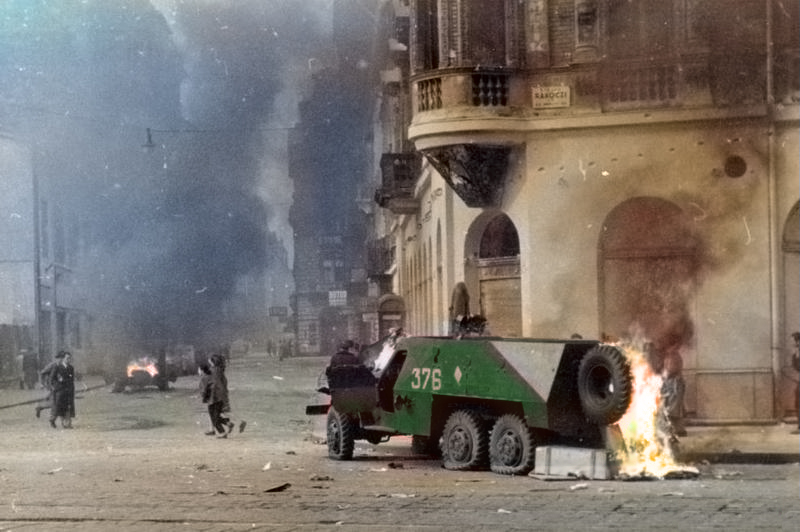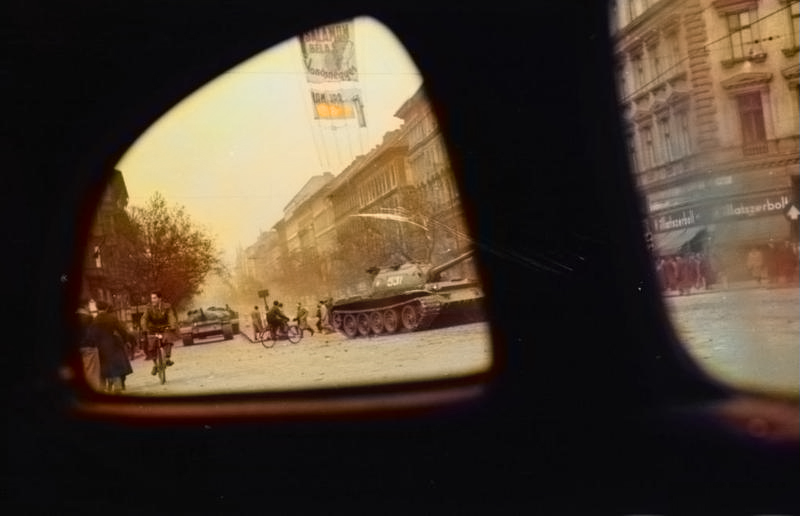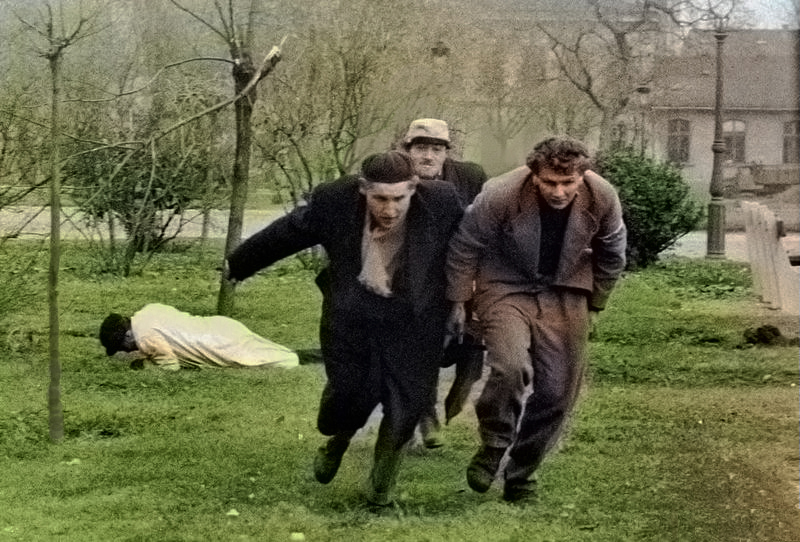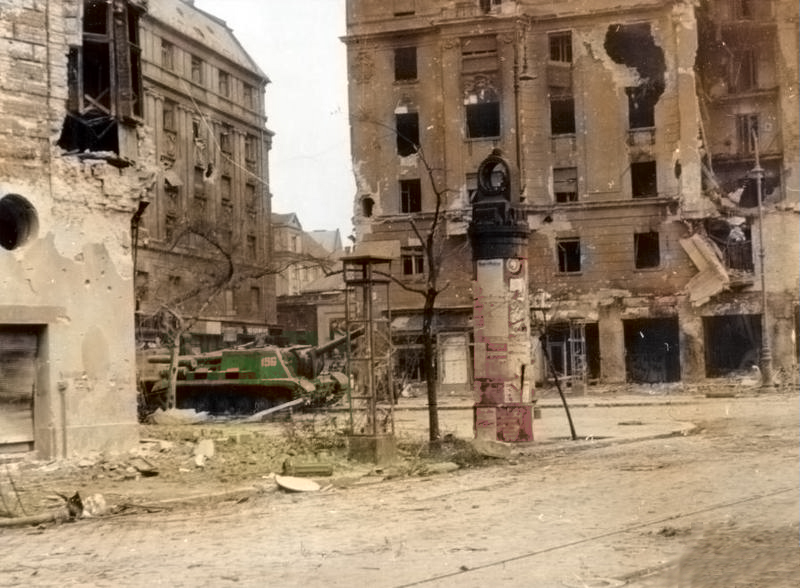The novel is based on the revolution in Hungary in 1956. This was a spontaneous uprising against the Hungarian Communist Party, which was controlled politically and militarily by the Soviet Union. To start with, large numbers of people emerged on the streets one morning in peaceful demonstrations, culminating outside the parliament building. This happened just hours after students had distributed leaflets and placards med political demands aimed at the authorities. There were similar demonstrations in other towns as soon as this news was passed down the telephone lines. These events are vividly portrayed in the book.

The demand that topped the students’ list and had the complete support of the general public, was that Soviet occupation troops should leave Hungary. Soviet forces had been stationed in Hungary since they liberated the country from Nazi German occupation during World War Two. At the first free election in 1945 the communists got only 17 % of the vote, despite the Russian liberation. An important reason for this heavy political defeat was the disgraceful behaviour of the Soviet soldiers against the local population, which is featured in the novel.
The Soviet authorities did not allow the party which clearly won the election to form a government. Instead a government which included communists with strong ties to Moscow was installed. The communists were then given the opportunity to use the press to split the political opposition, while Soviet forces arranged for the arrest or dispersion of popular political figures. By the time of the 1947 election, featured in the book, the Communist Party, despite little support, had a stranglehold on Hungarian society. Thereafter the presence of Soviet forces made it possible for the authorities to maintain an oppressive regime through torture, threats, purges and show trials. By 1956, the entire civilian population had had enough just when the authorities showed signs of uncertainty.

A unique feature of the Hungarian revolution was that it was unorganized and without a clear leader. Instead, the revolutionaries let themselves be inspired by historical names from Hungary’s war of independence against Austria (1848-1849), like Lajos Kossuth, names that could win over the support of the population at large. The revolution in 1956 cost several thousand lives in the space of a few days. Even more were injured and 200,000 fled to the West, events which are featured in the novel. These events lead to large demonstrations in Western countries against the Soviet Union and for the uprising. In Rome and Paris there were violent clashes against local communist parties.
However, the revolution in Budapest never quite got the attention in the West that the Prague Spring received in 1968, partly because television coverage had not developed sufficiently in 1956 and partly because it was more dangerous to cover journalistically.

In retrospect, the Hungarian revolution became to be regarded as the greatest threat to the Soviet Union’s control over Eastern Europe, requiring a major Soviet military operation to quell it. Events were influenced by external events, such as Stalin’s death in 1953, which brought the hope of some elements of freedom. In 1955 the Allies withdrew their troops from neighbouring Austria, occupied since the war. The explanation for maintaining Soviet troops in Hungary thus disappeared. The Soviet Union’s answer was to establish the Warsaw Pact. At the same time Hungarians were encouraged by strikes in Poland in support of Polish political leaders who spoke out against Moscow. Back in Hungary meanwhile, the Russians had never been forgiven for coming to Austria’s rescue during Hungary’s war of independence a hundred years earlier.
